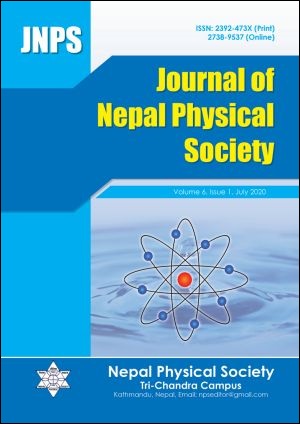Raman Spectroscopic Study of Valuable Idols from UNESCO World Heritage Sites in Kathmandu, Nepal
DOI:
https://doi.org/10.3126/jnphyssoc.v6i1.30427Keywords:
Heritage sites, Nondescriptive, Raman spectrum, SculptureAbstract
As an important step towards the conservation of valuable world heritage assets in Kathmandu, we performed Raman spectral studies on several valuable idols located in UNESCO World Heritage Sites for internal identification purposes. A spectrum of a stone idol in the Mohankali Chowk has a major band at 1093.5 cm-1 which may be identified as a C-O stretching vibration within the carbonate groups of CaCO3. The Raman spectra of a bull situated in the same Chowk has two major bands at the wavenumbers of 1812.7 and 3552.4 cm-1 which are assigned as combined vibrational modes of CO3 and hydroxyl stretching band, respectively. Similarly, the spectrum of a Shivalinga located at Pashupati Bankali has a major band at 467.7 cm-1. This band is formed by the movement of the oxygen atom in Si-O-Si, which is a symmetric stretching mode indicating the presence of crystalline silica (SiO2) in the Shivalinga. The Raman spectrum of Lord Changunarayan in Garuda located in the Changunarayan temple premises has a strong band at the wavenumber 462.6 cm-1, denoting the presence of quartz (SiO2).
Downloads
Downloads
Published
How to Cite
Issue
Section
License
All right reserved. No part of this Journal may be reproduced in any form or by any electronic or mechanical means, including information storage and retrieval system, without permission in writing from the publisher, except by a reviewer who may quote brief passage in a review. The views and interpretation in this journal are those of author(s) and they are not attributable to the NPS.




